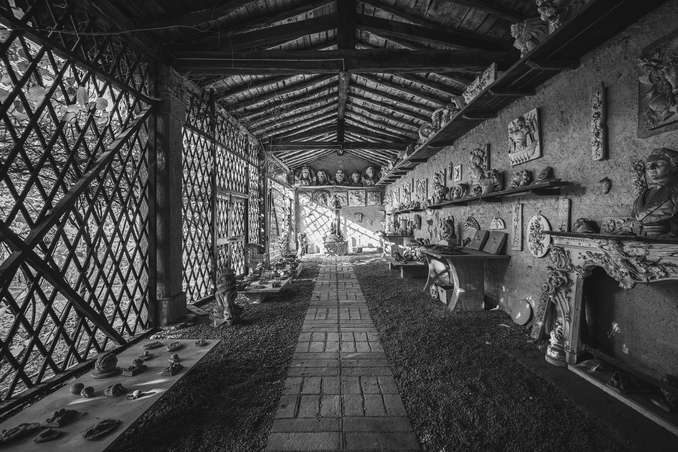
10 December 2020
The Lonato Fortress
The Lonato Fortress near Lake Garda is of mediaeval origin, though its present appearance dates to the 15th century. It is the most striking element of a monumental and landscape entity of extraordinary importance, a stone's throw away from Lake Garda and near Desenzano.
This area was amalgamated into a single property in the 20th century by the Senator Ugo Da Como (1869-1941) who wished to create a setting in keeping with his life as a scholar, collector, learned politician and sensitive connoisseur of national recollections. Half of the Rocca park is made up of a coppice, olive plantations, vineyards and spontaneous native plants, while the other half consists of grassy slopes leading down to the hamlet of Lonato, property of the Serenissima Republic of Venice until the end of the 18th century.
Inside the Fortress luxuriant lawns run along the perimeter enclosed by high, crenellated ramparts offering a view over the whole of the lake, once known as Benaco. An avenue of closely planted lime trees leads down from the Rocca to the summer residence of Senator Ugo Da Como, completely furnished, and rendered even more elegant by an enclosed garden covering four terraces.
Today this is a well-kept natural garden, in harmony with the neo-gothic architecture of the original seat of the Venetian authorities, where Ugo Da Como and his wife frequently interceded enthusiastically. The lower terrace, originally a fruit orchard, circumscribed by a massive wall skirting the 15th century church dedicated to Abbot Saint Anthony. The highest terrace borders Ugo Da Como's monumental library and has a beautiful Taxus baccata as its focal point. A pathway leads from a 15th century tower along the perimeter of the Venetian walls which completely enclosed the oldest fulcrum of the hamlet of Lonato del Garda.
This area was amalgamated into a single property in the 20th century by the Senator Ugo Da Como (1869-1941) who wished to create a setting in keeping with his life as a scholar, collector, learned politician and sensitive connoisseur of national recollections. Half of the Rocca park is made up of a coppice, olive plantations, vineyards and spontaneous native plants, while the other half consists of grassy slopes leading down to the hamlet of Lonato, property of the Serenissima Republic of Venice until the end of the 18th century.
Inside the Fortress luxuriant lawns run along the perimeter enclosed by high, crenellated ramparts offering a view over the whole of the lake, once known as Benaco. An avenue of closely planted lime trees leads down from the Rocca to the summer residence of Senator Ugo Da Como, completely furnished, and rendered even more elegant by an enclosed garden covering four terraces.
Today this is a well-kept natural garden, in harmony with the neo-gothic architecture of the original seat of the Venetian authorities, where Ugo Da Como and his wife frequently interceded enthusiastically. The lower terrace, originally a fruit orchard, circumscribed by a massive wall skirting the 15th century church dedicated to Abbot Saint Anthony. The highest terrace borders Ugo Da Como's monumental library and has a beautiful Taxus baccata as its focal point. A pathway leads from a 15th century tower along the perimeter of the Venetian walls which completely enclosed the oldest fulcrum of the hamlet of Lonato del Garda.
I love the smell of book ink in the morning.- Umberto Eco - |






